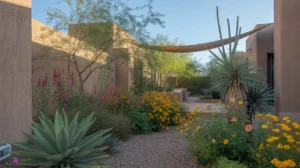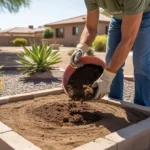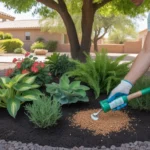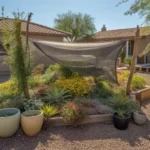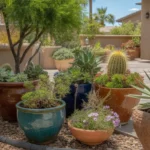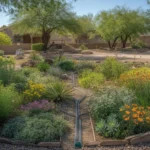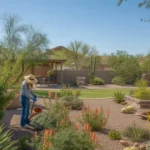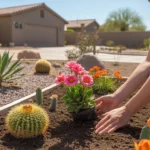As the heat of summer approaches, many desert gardeners in Gilbert assume their spring blooms are on borrowed time. But with a few smart adjustments, you can keep your garden bursting with color well into late May and beyond. The key is understanding the unique needs of desert-adapted plants and giving them the TLC they crave to power through rising temperatures.
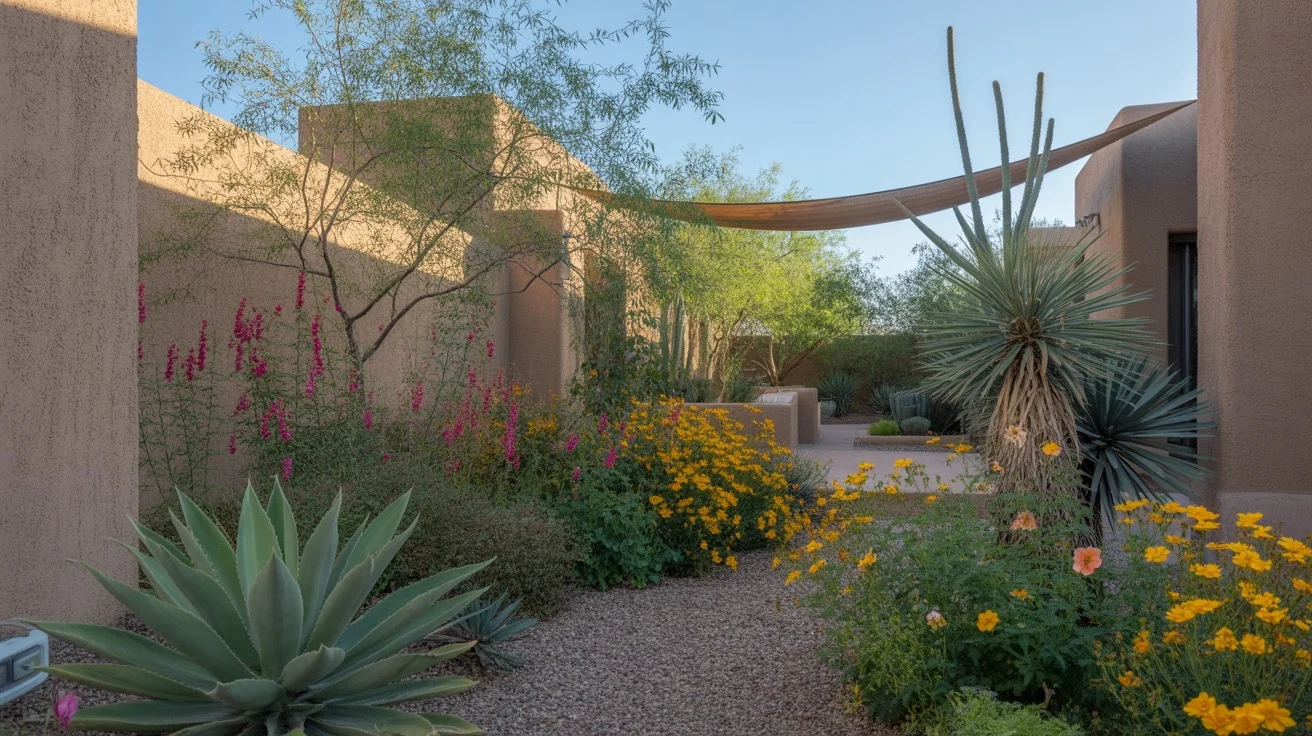
Dial In Your Watering Schedule
One of the biggest mistakes Gilbert gardeners make is not adjusting their irrigation as the weather shifts. What worked great in March can quickly become too little for thirsty late-spring plants. Take a close look at each plant’s water needs and consider increasing your watering frequency as temperatures climb into the 90s and 100s.
Desert-adapted plants like penstemon, desert marigold, and globe mallow are built for the heat, but they still appreciate a consistent supply of moisture to keep pumping out blooms. Aim for deep, thorough watering a few times a week rather than frequent shallow drinks. This encourages strong, deep roots that can weather the intense dry spells ahead.
If you’re not sure whether you’re hitting the sweet spot, use the finger test: Poke a finger a few inches into the soil near your plants. If it feels dry, it’s time to water. If it’s still damp, wait a day or two. With a little practice, you’ll dial in the perfect cadence to keep your blooms thriving.
Deadhead Religiously
Deadheading, or removing spent blooms, is the secret weapon of gardeners chasing extended color. When you clean up faded flowers, you’re redirecting the plant’s energy away from seed production and back into pumping out gorgeous new blooms. It’s like a fountain of youth for your blossoms.
Make deadheading a regular part of your late-spring maintenance routine. A couple times a week, stroll through your beds with clean pruning shears and snip off any blooms that are past their prime. For cluster flowers like verbena or penstemon, target the entire faded stem to encourage fresh branching.
As a bonus, all those faded blooms make fantastic mulch. Let them fall to the ground around your plants, where they’ll help retain moisture and eventually break down to nourish the soil. It’s the circle of life in action right in your Gilbert backyard.
Lightly Feed for Late-Season Vigor
Even desert-tough perennials can use a little nutritional boost to power through the late-spring heat. But a light touch is key—you want to provide just enough oomph without overwhelming heat-stressed plants or triggering tons of tender new growth that can’t handle the harsh conditions.
Opt for a gentle, organic fertilizer formulated for desert plants, and apply at half-strength according to the package directions. Seaweed or kelp-based feeds are a great choice, as they provide trace minerals and growth-stimulating hormones without the harsh salt buildup of conventional fertilizers. Your goal is to support steady, sustained blooming, not an explosion of lush foliage.
If you’re not sure where to start, ask for recommendations at your favorite local nursery that specializes in desert-adapted plants. They can point you to the best options for your specific plant palette and help you fine-tune your feeding schedule for maximum flower power.
Provide Afternoon Shade
Even sun-loving desert perennials can struggle under the intense late-spring rays in Gilbert. If you notice your blooms fading faster than usual or foliage looking scorched, it might be time to provide some strategic shade.
One easy solution is to add a shade sail or canvas panel to block the harshest afternoon sun. Position it to shield your most sensitive bloomers during the hottest part of the day, typically from 2-6pm. You can also use taller plants or structures to cast dappled shade and give your flowers a respite from the relentless heat.
If you’re planting a new bed for late-spring color, consider locations that get bright morning light but are shielded from intense afternoon rays. The east side of a wall or fence is often ideal, giving plants a dose of sun early in the day before temperatures really soar. With a little creative placement, you can craft a microclimate that keeps your blooms happy well into summer.
With these desert-smart strategies, your Gilbert garden can be a late-spring showstopper, full of vibrant color and lush textures that defy the heat. Enjoy the blooms while they last, and know that with a little know-how, you can squeeze every drop of floral beauty out of your desert landscape.

